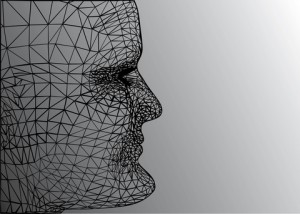The simple question, what is a phobia, is relatively easy to explain, but the answer may differ from what phobia sufferers are often led to believe. Before we look at this subject in more detail, there are two factors to consider. First, a phobia is a behavioural response and all behaviours can be changed. Second, a phobia isn’t something we have, it’s something we do – often unconsciously.
Unpacking the make-up of a phobia
Akin to a jigsaw, there are various pieces to unpack so that we can understand the make-up of a phobia. Looking at each individual element of the phobic response allows us to understand how they are created and work.
Phobias never cease to amaze
After years of working with phobias, I have literally seen it all. First, there are the more commonly known phobias such as spiders, needles, flying, vomit, public speaking, etc. Then we have phobias of buttons, Heinz beans, tall buildings, ghosts and many more. Unfortunately, some of those offering advice and solutions regarding phobias make the mistake of focusing on each individual phobia. In reality, no matter what kind of phobia you have, they can all be resolved following the same principles.
So what is a phobia?
If you suffer from phobias or have researched phobias, you will likely have come across the common rhetoric that a phobia is an irrational fear. So how can this fact actually help us? Let us break down the term “irrational fear”.
Fear is an emotional response that we experience internally when there is a perceived threat of some kind. An irrational fear essentially means that we have an internal response to something not externally rooted in our present reality. Therefore, if the fear is not rooted in our current external reality, the external trigger is not actually the source of our fear. The source of our fear is actually within our thought process, imagination and internal feelings.
These internal thoughts, made up of conclusions and negative associations, become our own virtual world. Appearing to be real.
We then impose the virtual world of our mind on external reality when there is no rational connection.
In essence, we are having an emotional response to our own virtual world.
Examples of an internal response
A man walks into a barn and mistakes a rope for a snake and panics, only to realise it was just a rope and immediately calms down. This perfectly illustrates the perceived threat in our minds against the non-existent external threat. Once the individual realises it is a rope and not a snake, their “irrational fear” simply disappears.
This is because the source of his fear was the idea in his mind of a snake. He was literally responding to a thought in his head about a snake.
Another example would be a woman who has a phobia of wasps and mistakes a quiet light buzzing sound behind her for a wasp. The noise could have been created by an array of electronic equipment such as air-conditioning. However, the initial response in her brain suggests otherwise. This triggers an internal response, panic, based upon her perception of an external threat that is non-existent. Once the woman turns around and sees that the buzzing sound is not a wasp, the panic disappears in a split second, and she returns to a calm state of mind.
Projecting internal fears onto reality
An external subject or circumstance triggered our fear in the two examples above. The source of our anxiety is actually happening within us, although we project this onto our reality. In effect, our brain is rewriting external reality by projecting our internal fears outwards. We are having an internal response to something that appears to be outside of us.
As human beings, we have five externally focused senses coming together to create an impression of the outside world around us. Using our brain, we process and interpret the world around us as individuals. However, the external perception of two individuals in the same situation can be very different.
The brain is a powerful organ
We literally perceive the world around us within our brain, and we project that process back onto the world. This, in turn, allows us to gather our orientation and perception. Confused?
Here is a straightforward but powerful example to show the power of orientation and perception:-
If two people walked into an art gallery and viewed a piece of art on the wall, their reactions and perceptions are likely to be different. One of the individuals could feel absolutely amazed by the artwork, thinking that it is a work of perfection. However, on the flip side of the coin, the other person may see the same piece of art and think it was an ugly piece of modern junk. They may even find it to be a repulsive offence to the art community. This demonstrates two very different internal views on the same external scenario.
In truth, the art in itself is neither good nor bad; it simply remains as it is. However, it can mean so many different things to many people. As human beings, we are giving a meaning to things around us.
Another example of the brain’s power is how we project internal perception onto the external world and those fascinating images where different people see different things. For example, what do you see if you look at this picture?

Do you see a duck with its beak on the left-hand side, or do you see a rabbit/hare with its ears on the left-hand side? Whether you see a duck or a rabbit/hare is a product of your internal perception projected onto the external world.
The following image is another example of how we project our internal views onto the external world.

As the lady appears to be ice-skating, we automatically assume she is wearing ice skates. However, if you look a little closer, you will see that she is wearing roller skates.
In reality, life is an empty canvas, and we paint the meaning onto life around us through our thoughts, beliefs and emotions. But, as they say, beauty exists within the eye of the beholder; all perception is projection. Consequently, all perceptions can be changed with the willingness and openness to consider alternative views.
Question time…………
If you knew with absolute certainty and were 100% guaranteed that you wouldn’t experience any internal symptoms of fear or panic the next time you are faced with that external trigger, would you be able to deal with it?
The chances are you would welcome this with open arms.
This tells us that the real problem here is your internal response and not the external trigger because once the internal response has been released, the external trigger can be embraced without fear.
Once we change your internal response, this will stop you from projecting your fears onto the external world, and your fear will be no more.
So, reading the article, we hope that we have demonstrated that phobias are less to do with external triggers and much more to do with our internal process of thoughts and feelings. Without that inner fear, that internal feeling, you would be absolutely fine and in total control.
Conclusion
This is the first of many articles in which we will deconstruct phobias, internal triggers and our powerful ability to project our thoughts and feelings onto the outside world. The brain is a mighty powerful organ that allows us to change these internal feelings and thereby eliminate, not just control, but actually eliminate phobias forever.






